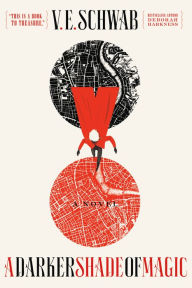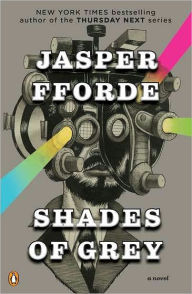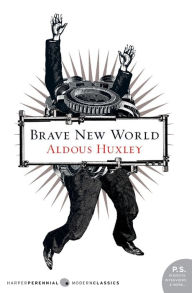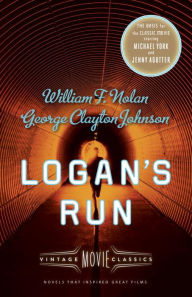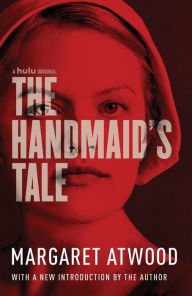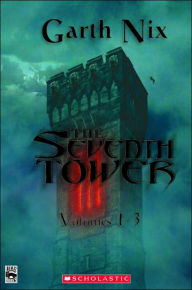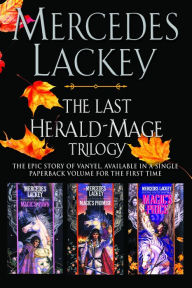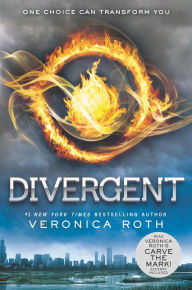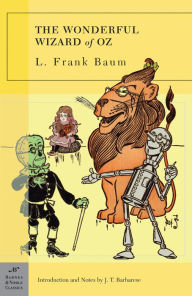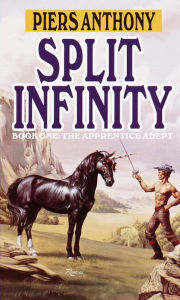14 Color-Coded Sci-Fi & Fantasy Sagas
 Here’s a trope that pops up in sci-fi and fantasy stories more than you might realize: societies broken down by color coding. Sometimes it is handled subtly, but sometimes, authors put it front-and-center in different ways, making the subtext into text.
Here’s a trope that pops up in sci-fi and fantasy stories more than you might realize: societies broken down by color coding. Sometimes it is handled subtly, but sometimes, authors put it front-and-center in different ways, making the subtext into text.
The 14 books and series below make no secret of their use of color to represent different aspects of their universes—but what’s truly interesting is how it are used, and the parallels and subversions each book employs.
Debug Notice: No product response from API
Red Rising, by Pierce Brown
A recent example of in-your-face color-coding is Pierce Brown’s awesome series set in a solar system-wide empire that has self-consciously modeled itself on Ancient Rome. Over the centuries, genetic engineering has divided humanity into 14 explicit castes, each explicitly color-coded (literally, the hues being visible in their hair and eye color), and destined for specific purposes. The Golds are the elites, physically and mentally superior. The story’s main hero, Darrow, starts off his life as a Red, part of the caste of unskilled laborers, but undergoes a radical procedure to change his color, and thus his fate. Brown’s decision to make color-coding an explicit part of his fictional society puts the themes of the action-heavy saga at the forefront: questions of destiny, genetics, and how we are conditioned to accept certain roles in society based solely on appearance and limitations that exist only in our minds.
Red Rising, by Pierce Brown
A recent example of in-your-face color-coding is Pierce Brown’s awesome series set in a solar system-wide empire that has self-consciously modeled itself on Ancient Rome. Over the centuries, genetic engineering has divided humanity into 14 explicit castes, each explicitly color-coded (literally, the hues being visible in their hair and eye color), and destined for specific purposes. The Golds are the elites, physically and mentally superior. The story’s main hero, Darrow, starts off his life as a Red, part of the caste of unskilled laborers, but undergoes a radical procedure to change his color, and thus his fate. Brown’s decision to make color-coding an explicit part of his fictional society puts the themes of the action-heavy saga at the forefront: questions of destiny, genetics, and how we are conditioned to accept certain roles in society based solely on appearance and limitations that exist only in our minds.
A Darker Shade of Magic
A Darker Shade of Magic
In Stock Online
Paperback $15.99
Shades of Magic, by V.E. Schwab
Schwab’s Shades of Magic trilogy uses color in a broad but effective way. Each of the alternate Londons of her four-part magical multiverse is referred to by a color that reflects something vital about that version of the ancient city—Red London is vibrant and magical, a living, breathing place buzzing with energy (red being the color of passion and power). White London is broken and damaged, its vital forces leaking away—bleaching it white as bone. Grey London, on the other hand, is comparably drab—it’s not far off from our mundane world, magic-less world, which certainly seems colorless in comparison to a world with magic. And then there’s Black London—if you haven’t read the books, three guesses as to why Black London is, well, black. The color-coding doesn’t factor much into the magic or other aspects of the story, but these broad descriptors are powerful symbols and instantly make the stakes of the varied settings clear.
Shades of Magic, by V.E. Schwab
Schwab’s Shades of Magic trilogy uses color in a broad but effective way. Each of the alternate Londons of her four-part magical multiverse is referred to by a color that reflects something vital about that version of the ancient city—Red London is vibrant and magical, a living, breathing place buzzing with energy (red being the color of passion and power). White London is broken and damaged, its vital forces leaking away—bleaching it white as bone. Grey London, on the other hand, is comparably drab—it’s not far off from our mundane world, magic-less world, which certainly seems colorless in comparison to a world with magic. And then there’s Black London—if you haven’t read the books, three guesses as to why Black London is, well, black. The color-coding doesn’t factor much into the magic or other aspects of the story, but these broad descriptors are powerful symbols and instantly make the stakes of the varied settings clear.
The Black Prism (Lightbringer Series #1)
The Black Prism (Lightbringer Series #1)
By Brent Weeks
In Stock Online
Paperback $16.00
The Lightbringer series, by Brent Weeks
Weeks’ magic system is one of the most explicitly color-coded in literature—Drafters in the Lightbringer universe can perceive specific frequencies of light (colors) and through effort of will, transform them into something called Luxin, which can in turn be transformed, with skill, into just about anything. What’s great about Weeks’ concept is the sheer variety of colors Drafters can master is both a metaphor for creativity in his world, and a handy organizing principle for a magic system that pivots from the complexity of light and color into complexity of magic. It’s a great example of taking what could be an obvious idea and transforming it via worldbuilding into something subtle and powerful.
The Lightbringer series, by Brent Weeks
Weeks’ magic system is one of the most explicitly color-coded in literature—Drafters in the Lightbringer universe can perceive specific frequencies of light (colors) and through effort of will, transform them into something called Luxin, which can in turn be transformed, with skill, into just about anything. What’s great about Weeks’ concept is the sheer variety of colors Drafters can master is both a metaphor for creativity in his world, and a handy organizing principle for a magic system that pivots from the complexity of light and color into complexity of magic. It’s a great example of taking what could be an obvious idea and transforming it via worldbuilding into something subtle and powerful.
Shades of Grey
Shades of Grey
Paperback $17.00
Shades of Grey, by Jasper Fforde
In this woefully under-read, maybe series-starter (sequels have been forthcoming for years and years), Fforde imagines a future in which humanity’s color perception has become split—most people can perceive just one wavelength. The protagonist, for example, can see only red. Some people can see more, and some can only see, yes, shades of grey. Genetic mixing can result in children who see different frequencies; if a Navy Blue has a child with a Red, the resultant child might be a Purple, and even then, a Purple’s vision can shade towards red or purple. Worse, colors have an effect on people, with some colors causing drug-like reactions, and others acting as poisons. Doctors are known as swatchmen, and use swatches of different colors to treat their patients. It’s a gloriously messy future that plays with the idea that what we can perceive shapes how we interact with the world.
Shades of Grey, by Jasper Fforde
In this woefully under-read, maybe series-starter (sequels have been forthcoming for years and years), Fforde imagines a future in which humanity’s color perception has become split—most people can perceive just one wavelength. The protagonist, for example, can see only red. Some people can see more, and some can only see, yes, shades of grey. Genetic mixing can result in children who see different frequencies; if a Navy Blue has a child with a Red, the resultant child might be a Purple, and even then, a Purple’s vision can shade towards red or purple. Worse, colors have an effect on people, with some colors causing drug-like reactions, and others acting as poisons. Doctors are known as swatchmen, and use swatches of different colors to treat their patients. It’s a gloriously messy future that plays with the idea that what we can perceive shapes how we interact with the world.
The Hobbit and The Lord of the Rings
The Hobbit and The Lord of the Rings
In Stock Online
Other Format $55.00
The Lord of the Rings, by J.R.R. Tolkien
Tolkien’s color-coding has often sparked accusations of subtle (or not-so-subtle) racism, but it’s most clearly on display with the istari, the wizards who are assigned specific colors as part of their identity. Saruman the White is initially regarded as the greatest of their order, with Gandalf the Grey, Radagast the Brown, and Alatar and Pallando the Blue as lesser members. Interestingly, Gandalf is clearly the second-most effective wizard, and his color is closest to white, while Radagast has only a small influence on events; the Blue Wizards are barely mentioned, disappearing into the East and South. When Saruman’s treachery is revealed, he attempts to pass himself off as Saruman of the Many Colors, with a cloak that ripples like the rainbow, while Gandalf’s self-sacrifice sees him transformed into Gandalf the White.
The Lord of the Rings, by J.R.R. Tolkien
Tolkien’s color-coding has often sparked accusations of subtle (or not-so-subtle) racism, but it’s most clearly on display with the istari, the wizards who are assigned specific colors as part of their identity. Saruman the White is initially regarded as the greatest of their order, with Gandalf the Grey, Radagast the Brown, and Alatar and Pallando the Blue as lesser members. Interestingly, Gandalf is clearly the second-most effective wizard, and his color is closest to white, while Radagast has only a small influence on events; the Blue Wizards are barely mentioned, disappearing into the East and South. When Saruman’s treachery is revealed, he attempts to pass himself off as Saruman of the Many Colors, with a cloak that ripples like the rainbow, while Gandalf’s self-sacrifice sees him transformed into Gandalf the White.
Brave New World
Brave New World
In Stock Online
Paperback $17.99
Brave New World, by Aldous Huxley
Many modern-day SF tropes originated in this novel, so it’s not surprising Huxley was among the first to use explicit color-coding to describe his dystopia. In a future where reproduction is done entirely in labs, with different social castes created to serve specific purposes, each strata of society wears clothes that mark their status. The Alphas, individual and intelligent, wear gray; Betas favor mulberry (essentially purple); Gammas wear green, Deltas brown, and the lowly Epsilons, black. Interestingly, despite Huxley’s intention that the novel parody Utopian ideals and ultimately represent a negative view of a technologically-dominated future, he doesn’t place any of the main characters in the lower castes; they’re all Alphas and Betas (not counting John the Savage, who exists outside the caste system).
Brave New World, by Aldous Huxley
Many modern-day SF tropes originated in this novel, so it’s not surprising Huxley was among the first to use explicit color-coding to describe his dystopia. In a future where reproduction is done entirely in labs, with different social castes created to serve specific purposes, each strata of society wears clothes that mark their status. The Alphas, individual and intelligent, wear gray; Betas favor mulberry (essentially purple); Gammas wear green, Deltas brown, and the lowly Epsilons, black. Interestingly, despite Huxley’s intention that the novel parody Utopian ideals and ultimately represent a negative view of a technologically-dominated future, he doesn’t place any of the main characters in the lower castes; they’re all Alphas and Betas (not counting John the Savage, who exists outside the caste system).
Logan's Run (Vintage Movie Classics)
Logan's Run (Vintage Movie Classics)
By
William F. Nolan
,
George Clayton Johnson
Foreword by
Daniel H. Wilson
Paperback $15.95
Logan’s Run, by William F. Nolan
The powers that be keep discussing a new film version of this classic 1967 novel (which became a, er, less classic film in 1976), and we fervently hope someone gets around to it eventually. It’s set in a future where the maximum lifespan of every human is legally set at 21—and where government agents known as Sandmen hunt down those who try to run from their Lastday doom. Every citizen has a crystal embedded in their hands that makes their age apparent to everyone via a simple color code that changes every seven years: yellow for the youngest, blue between ages 7–13, and red during your final seven years. On your Lastday, it blinks red and black, and then turns black for good, at which point you’re supposed to report in for execution like a good law-abiding citizen. Nolan’s straightforward color-coding underscores the power of color as a visual system, used in everything from traffic signals to sports penalties.
Logan’s Run, by William F. Nolan
The powers that be keep discussing a new film version of this classic 1967 novel (which became a, er, less classic film in 1976), and we fervently hope someone gets around to it eventually. It’s set in a future where the maximum lifespan of every human is legally set at 21—and where government agents known as Sandmen hunt down those who try to run from their Lastday doom. Every citizen has a crystal embedded in their hands that makes their age apparent to everyone via a simple color code that changes every seven years: yellow for the youngest, blue between ages 7–13, and red during your final seven years. On your Lastday, it blinks red and black, and then turns black for good, at which point you’re supposed to report in for execution like a good law-abiding citizen. Nolan’s straightforward color-coding underscores the power of color as a visual system, used in everything from traffic signals to sports penalties.
The Handmaid's Tale (Movie Tie-In)
The Handmaid's Tale (Movie Tie-In)
In Stock Online
Paperback $15.95
The Handmaid’s Tale, by Margaret Atwood
There’s so much smart subversion going on in this novel, you shouldn’t be surprised to find it extended to the use of color. Red is usually associated with power and strength in the SFF world (witness the Emperor’s guards in the Star Wars films), but Atwood assigns it to the Handmaids as a symbol of their fertility and subservient status. And yet it also represents power and strength there, doesn’t it? Atwood uses other color codes: the wives wear blue, echoing the traditional garb of the Virgin Mary in an ironic comment on their infertility, while children wear white to signify their relative innocence in a world dominated by sexual concerns. Other color codes abound—the domestics wear green, the Eyes wear SS-like black, and the colonists wear gray—appropriate for people with little importance in a nearly barren society.
The Handmaid’s Tale, by Margaret Atwood
There’s so much smart subversion going on in this novel, you shouldn’t be surprised to find it extended to the use of color. Red is usually associated with power and strength in the SFF world (witness the Emperor’s guards in the Star Wars films), but Atwood assigns it to the Handmaids as a symbol of their fertility and subservient status. And yet it also represents power and strength there, doesn’t it? Atwood uses other color codes: the wives wear blue, echoing the traditional garb of the Virgin Mary in an ironic comment on their infertility, while children wear white to signify their relative innocence in a world dominated by sexual concerns. Other color codes abound—the domestics wear green, the Eyes wear SS-like black, and the colonists wear gray—appropriate for people with little importance in a nearly barren society.
Seventh Tower: Volumes 1-3
Seventh Tower: Volumes 1-3
By Garth Nix
Hardcover
$13.45
$14.95
The Seventh Tower series, by Garth Nix
Nix’s universe uses stone-based magic in the form of Sunstones, which absorb energy when exposed to the sun—the larger the stone and the longer it’s left in the sun, the more powerful it is. The Chosen wield the stones and are divided between seven tiers of status, each coded to a color of the rainbow, from Violet to Red; they can be promoted or demoted depending on their achievements of failures. If a Red is demoted, they become one of the Underfolk who serve the Chosen. Nix’s use of the rainbow spectrum for his society incorporates a sense of “natural order,” as opposed to an artificial system imposed by people. This is echoed in the plot, set in motion by the breaking of a pact—a violation of the natural order.
The Seventh Tower series, by Garth Nix
Nix’s universe uses stone-based magic in the form of Sunstones, which absorb energy when exposed to the sun—the larger the stone and the longer it’s left in the sun, the more powerful it is. The Chosen wield the stones and are divided between seven tiers of status, each coded to a color of the rainbow, from Violet to Red; they can be promoted or demoted depending on their achievements of failures. If a Red is demoted, they become one of the Underfolk who serve the Chosen. Nix’s use of the rainbow spectrum for his society incorporates a sense of “natural order,” as opposed to an artificial system imposed by people. This is echoed in the plot, set in motion by the breaking of a pact—a violation of the natural order.
The Last Herald-Mage Trilogy
The Last Herald-Mage Trilogy
Paperback $18.00
The Heralds of Valdemar series, by Mercedes Lackey
Spanning thousands of years, Lackey’s epic is set in the Kingdom of Valdemar, which must be protected by the titular Heralds and their Companions, familiars best described as intelligent horses. Lackey imagines color-coding on a very practical level; Heralds (heroes), Bards (musical mages), and Healers must be easily identifiable; thus they wear distinct colors (white, red, and green, respectively). The colors, in turn, are chosen because of the difficulty in counterfeiting them in Lackey’s universe, doubling-down on the practical aspects of the color system. This provides a mundane support for a magical universe and helps us suspend our disbelief—instead of simply hand-waving the concept, Lackey offers a reasonable and intelligent explanation for the way hues are incorporated into her world.
The Heralds of Valdemar series, by Mercedes Lackey
Spanning thousands of years, Lackey’s epic is set in the Kingdom of Valdemar, which must be protected by the titular Heralds and their Companions, familiars best described as intelligent horses. Lackey imagines color-coding on a very practical level; Heralds (heroes), Bards (musical mages), and Healers must be easily identifiable; thus they wear distinct colors (white, red, and green, respectively). The colors, in turn, are chosen because of the difficulty in counterfeiting them in Lackey’s universe, doubling-down on the practical aspects of the color system. This provides a mundane support for a magical universe and helps us suspend our disbelief—instead of simply hand-waving the concept, Lackey offers a reasonable and intelligent explanation for the way hues are incorporated into her world.
Divergent (Divergent Series #1)
Divergent (Divergent Series #1)
In Stock Online
Paperback $16.99
The Divergent series, by Veronica Roth
Roth’s dystopian vision of a future Chicago in which all citizens are divided into factions that display specific personality traits that can serve best in specific functions—Abnegation, Amity, Candor, Dauntless, and Erudite—is more interested in the titular Divergent, or those who don’t have any single predominant trait, testing positive for several at once. What’s interesting about Roth’s concept of color-coding is its voluntary nature; the factions tend towards colors that match their personalities, but there’s a lot of wiggle-room within those choices; it’s voluntary, not something imposed on them. Dauntless wear black because they’re fighters. Abnegation wear tattered gray clothes to emphasize their humility. Amity dresses in bright primary colors to express their optimistic attitude. This mixture of free will encased inside brutal oppression opens up all sorts of rich avenues for discussion.
The Divergent series, by Veronica Roth
Roth’s dystopian vision of a future Chicago in which all citizens are divided into factions that display specific personality traits that can serve best in specific functions—Abnegation, Amity, Candor, Dauntless, and Erudite—is more interested in the titular Divergent, or those who don’t have any single predominant trait, testing positive for several at once. What’s interesting about Roth’s concept of color-coding is its voluntary nature; the factions tend towards colors that match their personalities, but there’s a lot of wiggle-room within those choices; it’s voluntary, not something imposed on them. Dauntless wear black because they’re fighters. Abnegation wear tattered gray clothes to emphasize their humility. Amity dresses in bright primary colors to express their optimistic attitude. This mixture of free will encased inside brutal oppression opens up all sorts of rich avenues for discussion.
The Wonderful Wizard of Oz (Barnes & Noble Classics Series)
The Wonderful Wizard of Oz (Barnes & Noble Classics Series)
By
L. Frank Baum
Introduction
J. T. Barbarese
Illustrator
William Wallace Denslow
In Stock Online
Paperback $9.95
The Wizard of Oz, by L. Frank Baum
Baum’s classic uses a broad color-coding system for the four countries that make up Oz: Blue for Munchkin Country, Yellow for the Winkies, Red for the Quadlings, purple for Gillikin Country, and Green for the central Emerald City. Baum’s choices of bright colors emphasize the fairy-tale, childlike nature of his story while serving plot functions—since the witches in Baum’s world wear white, and the Munchkin color is blue, Dorothy Gale’s blue and white dress make the Munchkins think she must be a powerful witch as well as one of their allies. Baum applies color-coding to other aspects of the story as well, from the famous Yellow Brick Road to the red poppies that put everyone to sleep, all in the service of crafting a vibrant universe beyond our hum-drum reality. His use of color even inspired plenty of weird theories—most famously the idea that the whole book is a complex allegory for the Gold Standard that was still a big deal when the book was published in 1900. (The movie version, which gives the bad witch green skin and turns the silver slippers ruby red, is a horse of a different color.)
The Wizard of Oz, by L. Frank Baum
Baum’s classic uses a broad color-coding system for the four countries that make up Oz: Blue for Munchkin Country, Yellow for the Winkies, Red for the Quadlings, purple for Gillikin Country, and Green for the central Emerald City. Baum’s choices of bright colors emphasize the fairy-tale, childlike nature of his story while serving plot functions—since the witches in Baum’s world wear white, and the Munchkin color is blue, Dorothy Gale’s blue and white dress make the Munchkins think she must be a powerful witch as well as one of their allies. Baum applies color-coding to other aspects of the story as well, from the famous Yellow Brick Road to the red poppies that put everyone to sleep, all in the service of crafting a vibrant universe beyond our hum-drum reality. His use of color even inspired plenty of weird theories—most famously the idea that the whole book is a complex allegory for the Gold Standard that was still a big deal when the book was published in 1900. (The movie version, which gives the bad witch green skin and turns the silver slippers ruby red, is a horse of a different color.)
Split Infinity (Apprentice Adept #1)
Split Infinity (Apprentice Adept #1)
Paperback $7.99
Apprentice Adept series, by Piers Anthony
Anthony’s series about a planet that exists in two dimensions simultaneously—one where magic rules, one where science runs everything—has an interesting take on color-coding. The mages on the magical side of things, known as Adepts, are assigned a color that fits their specific powers and personalities. For example, the protagonist of the original trilogy becomes the Blue Adept because he expresses his power mainly through songs and poetry. The system proves the value of a color-coding system, as referring to him as the Adept of Magical Songs isn’t nearly as convenient, and the use of color brings shadings of other traits and themes into the characterization.
Apprentice Adept series, by Piers Anthony
Anthony’s series about a planet that exists in two dimensions simultaneously—one where magic rules, one where science runs everything—has an interesting take on color-coding. The mages on the magical side of things, known as Adepts, are assigned a color that fits their specific powers and personalities. For example, the protagonist of the original trilogy becomes the Blue Adept because he expresses his power mainly through songs and poetry. The system proves the value of a color-coding system, as referring to him as the Adept of Magical Songs isn’t nearly as convenient, and the use of color brings shadings of other traits and themes into the characterization.
Robert Jordan Wheel of Time Boxed Set, Volume 1 (Books 1-3)
Robert Jordan Wheel of Time Boxed Set, Volume 1 (Books 1-3)
Paperback
$20.77
$25.97
The Wheel of Time, by Robert Jordan
Jordan’s epic fantasy series is a genius concoction that borrows tropes and ideas from every epic fantasy that came before, synthesizing them into a story so huge it hints at encompassing all of our real world history as well. The Aes Sedai can channel saidar (women) and saidin (men), but after the Pyrrhic victory over the Dark One, the male Aes Sedai were driven insane and eradicated, leaving just the female half, organized into color-coded Ajahs. Interestingly, the color codes aren’t obvious; the Red Ajah specialize in hunting down male channelers before they can become a threat to the world, while the Green Ajah are the military wing. And while the secret Black Ajah are exactly what you might expect, the White Ajah aren’t the noble, powerful leaders but are the smallest and least influential of the Ajah, focused on philosophical matters. Except maybe that’s the whole point.
The Wheel of Time, by Robert Jordan
Jordan’s epic fantasy series is a genius concoction that borrows tropes and ideas from every epic fantasy that came before, synthesizing them into a story so huge it hints at encompassing all of our real world history as well. The Aes Sedai can channel saidar (women) and saidin (men), but after the Pyrrhic victory over the Dark One, the male Aes Sedai were driven insane and eradicated, leaving just the female half, organized into color-coded Ajahs. Interestingly, the color codes aren’t obvious; the Red Ajah specialize in hunting down male channelers before they can become a threat to the world, while the Green Ajah are the military wing. And while the secret Black Ajah are exactly what you might expect, the White Ajah aren’t the noble, powerful leaders but are the smallest and least influential of the Ajah, focused on philosophical matters. Except maybe that’s the whole point.
What color-coded stories are we forgetting? Yell at us in the comments until you’re blue in the face.
